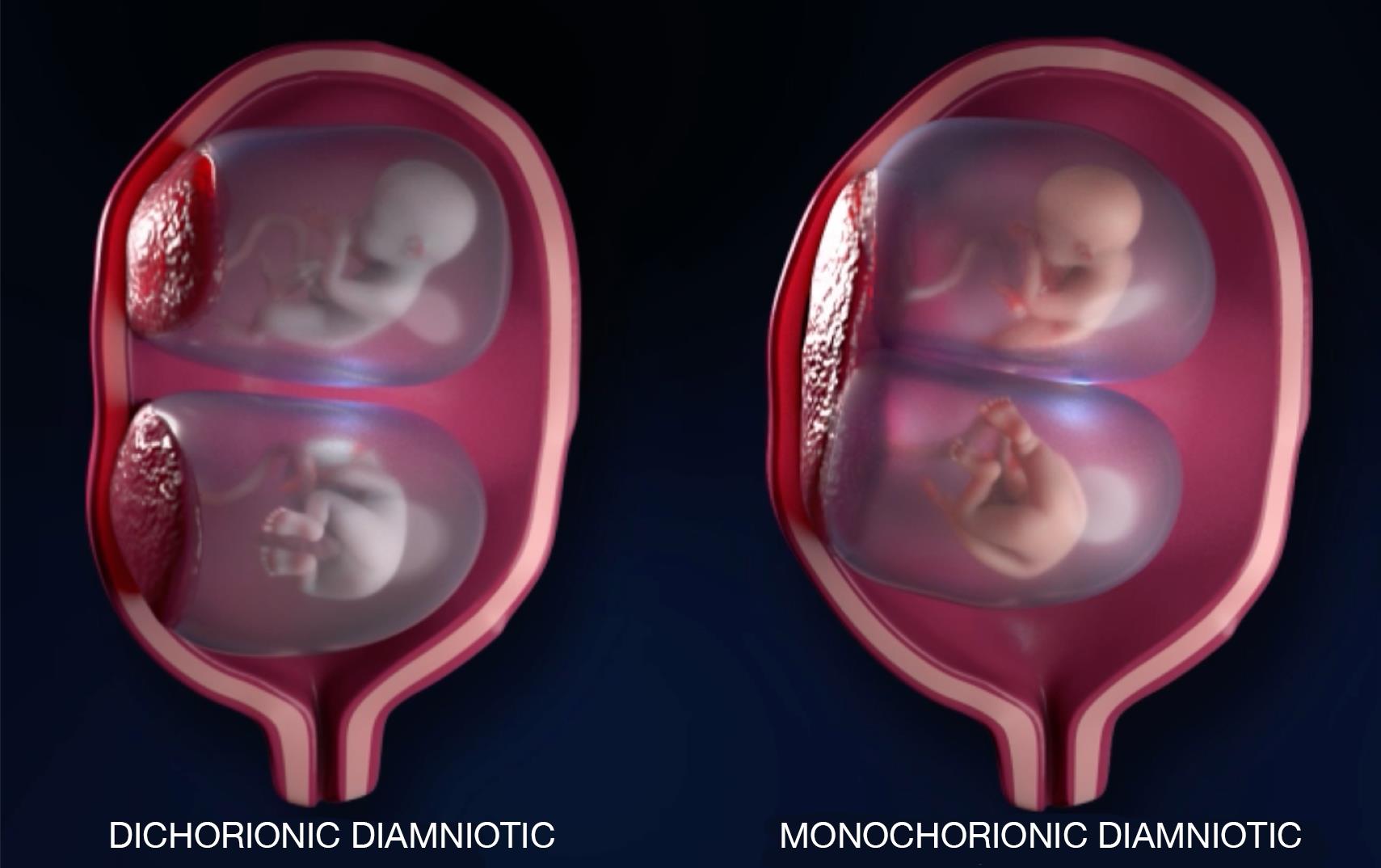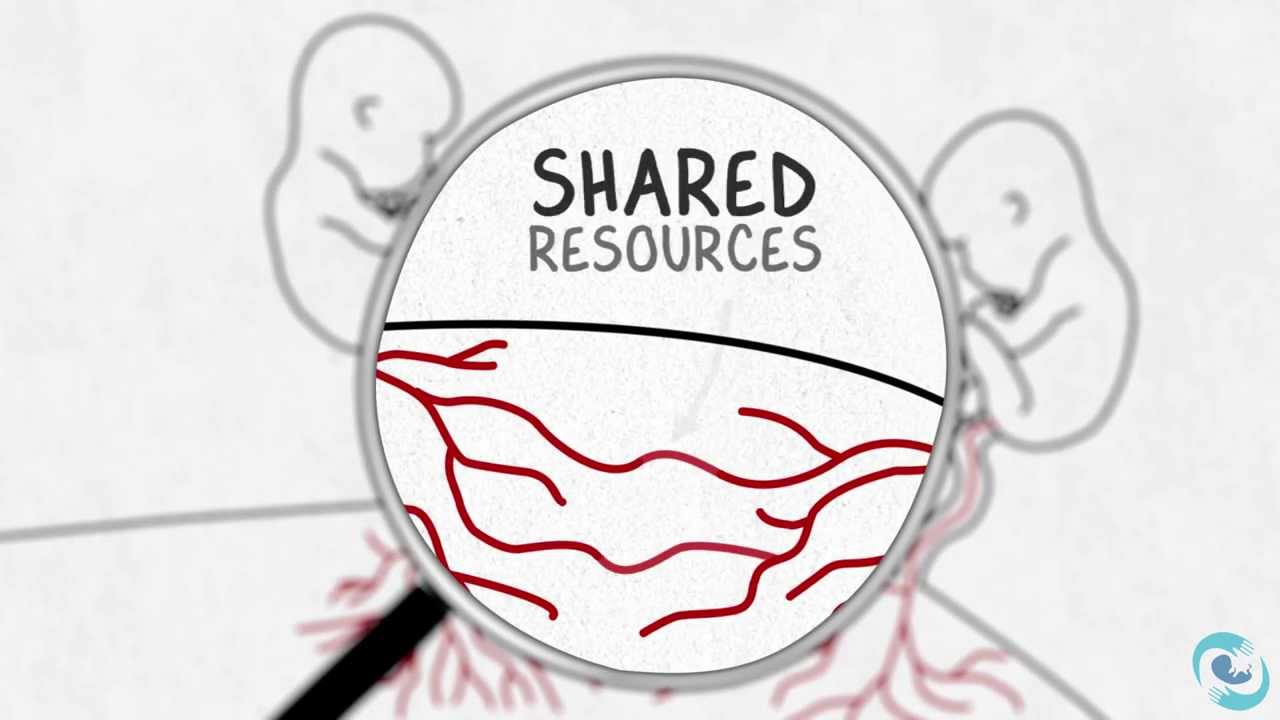Polyhydramnios In Dichorionic Diamniotic Twins - Causes, Symptoms, And Management
Polyhydramnios in dichorionic diamniotic twins can be a concerning medical condition for expectant mothers. When a mother is carrying twins, especially dichorionic diamniotic twins, there is a higher chance of developing polyhydramnios, a condition where there is an excess amount of amniotic fluid surrounding the fetus.
Author:Suleman ShahReviewer:Han JuApr 06, 202325.8K Shares375.3K Views

Polyhydramnios in dichorionic diamniotic twinscan be a concerning medical condition for expectant mothers.
When a mother is carrying twins, especially dichorionic diamniotic twins, there is a higher chance of developing polyhydramnios, a condition where there is an excess amount of amniotic fluidsurrounding the fetus.
This can lead to a number of complications during pregnancy, such as preterm labor, premature rupture of membranes, and a higher risk of cesarean delivery.
In this article, we will explore the causes, symptoms, and management of polyhydramnios in dichorionic diamniotic twins.
Understanding Dichorionic Diamniotic Twins
Dichorionic diamniotic (DCDA) twins are the most common type of twins that occur in about 30% of all twin pregnancies. This type of twin pregnancy happens when two separate eggs are fertilized by two different sperm, and each egg implants in the uterus separately.
Each fetus has its own placenta and amniotic sac, which reduces the risk of complications that can occur with monochorionic twins who share a placenta.
DCDA twins are usually diagnosed early in pregnancy during an ultrasound scan. The ultrasound will show two gestational sacs and two separate embryos with their own amniotic sacs and placentas.
However, the presence of two placentas does not always guarantee a complication-free pregnancy. One potential complication that can occur in DCDA twins is polyhydramnios.
Polyhydramnios, also known as hydramnios, is a condition in which there is too much amniotic fluid surrounding the baby. In DCDA twin pregnancies, polyhydramnios can occur in one or both sacs.
It is important to monitor the amount of amniotic fluid in each sac, as the presence of polyhydramnios can indicate an underlying medical condition that requires immediate attention.
Polyhydramnios can be caused by a number of factors, including maternal diabetes, fetal abnormalities, and twin-to-twin transfusion syndrome (TTTS).
TTTS is a rare but serious condition that can occur in monochorionic twins where blood flows from one twin to the other, causing one twin to receive too much blood and the other too little.
In DCDA twin pregnancies, the risk of polyhydramnios increases when one twin has a medical condition that affects their ability to swallow or digest amniotic fluid.
This can lead to an accumulation of fluid in the affected twin's amniotic sac, causing it to stretch and leading to polyhydramnios.

Monochorionic vs Dichorionic Twin Pregnancy
Causes Of Polyhydramnios In DCDA Twins
Polyhydramnios in DCDA twins can occur due to a variety of reasons. Some of the most common causes include:
- Twin-to-twin transfusion syndrome (TTTS)- This condition occurs when one twin receives more blood flow and nutrients from the placenta than the other twin. As a result, one twin may develop polyhydramnios while the other twin may develop oligohydramnios (a condition characterized by too little amniotic fluid).
- Fetal anomalies- Certain fetal anomalies, such as esophageal atresia (a condition where the esophagus does not connect to the stomach) and anencephaly (a condition where the brain does not develop), can cause polyhydramnios.
- Maternal diabetes- Women with diabetes have an increased risk of developing polyhydramnios during pregnancy.
Symptoms Of Polyhydramnios In DCDA Twins
Some of the most common symptoms of polyhydramnios in DCDA twins include:
- Rapid or excessive weight gain in the mother
- Shortness of breath
- Swelling in the hands and feet
- Abdominal pain or discomfort
- Premature contractions or labor
- Premature rupture of membranes
- Decreased fetal movement
Management Of Polyhydramnios In DCDA Twins
Polyhydramnios in DCDA twins can increase the risk of complications during pregnancy, labor, and delivery. Therefore, the management of polyhydramnios in DCDA twins is essential to prevent adverse outcomes.
Here are some of the management strategies used in the treatment of polyhydramnios in DCDA twins:
Close Monitoring
Women with polyhydramnios in DCDA twins require close monitoring throughout their pregnancy.
Frequent ultrasound scans are done to assess the amniotic fluid levels, fetal growth, and development. Non-stress tests and contraction stress tests may also be performed to evaluate fetal well-being.
Amnioreduction
Amnioreduction is a procedure that involves the removal of excess amniotic fluid from the uterus.
This procedure is usually done if the amniotic fluid levels are extremely high and causing discomfort or other complications. It is performed using a needle to drain the fluid from the amniotic sac.
Maternal And Fetal Surveillance
Women with polyhydramnios in DCDA twins require frequent monitoring to identify and manage any complications that may arise during pregnancy.
This may include monitoring for preterm labor, preeclampsia, gestational diabetes, or other medical conditions that can affect maternal and fetal health.
Delivery Planning
Delivery planning is an essential component of managing polyhydramnios in DCDA twins.
The timing and mode of delivery depend on several factors, including gestational age, fetal well-being, and the presence of any complications. In some cases, early delivery may be necessary to prevent adverse outcomes.
Consultation With A Specialist
Women with polyhydramnios in DCDA twins may require consultation with a specialist, such as a perinatologist or a maternal-fetal medicine specialist.
These experts can provide specialized care and management for high-risk pregnancies and help prevent adverse outcomes.
How Does Polyhydramnios Affect The Delivery Of Dichorionic Diamniotic Twins?
Polyhydramnios in dichorionic diamniotic twins can affect the delivery in several ways. First, the excess amniotic fluid can cause the uterus to become distended and lead to preterm labor.
Second, the size of the uterus can make it difficult for the babies to move into the optimal position for delivery. Third, the risk of cord prolapse or other complications during delivery may increase due to the excess fluid.
In some cases, a cesarean section may be necessary to safely deliver the babies. The delivery plan will depend on the severity of the polyhydramnios and the health of the babies and mother.
What Are The Complications Of Polyhydramnios In Dichorionic Diamniotic Twins?
Polyhydramnios in dichorionic diamniotic twins can lead to several complications for both the mother and the babies. Some of the complications are:
- Preterm labor- The excess amniotic fluid can put pressure on the cervix and cause it to dilate prematurely, leading to preterm labor.
- Placental abruption- The excessive pressure from the amniotic fluid can cause the placenta to detach from the uterine wall, leading to a placental abruption.
- Cord prolapse- The excessive fluid can cause the umbilical cord to prolapse or slip down into the vagina before the baby, which can lead to fetal distress and asphyxiation.
- Postpartum hemorrhage- The large uterus after delivery of the twins can result in postpartum hemorrhage due to uterine atony.
- Respiratory distress- The babies may develop respiratory distress syndrome due to the excess amniotic fluid, which can lead to breathing difficulties after birth.
It is important for pregnant women with polyhydramnios in dichorionic diamniotic twins to be closely monitored by their healthcare provider to prevent these complications.
People Also Ask
What Causes Polyhydramnios In Dichorionic Diamniotic Twins?
Polyhydramnios in dichorionic diamniotic twins can be caused by a number of factors, including gestational diabetes, twin-to-twin transfusion syndrome, and fetal anomalies.
How Is Polyhydramnios In Dichorionic Diamniotic Twins Treated?
The treatment for polyhydramnios in dichorionic diamniotic twins depends on the severity of the condition and the underlying cause. Some treatment options include amnioreduction, medication, and early delivery.
What Are The Risks Of Polyhydramnios In Dichorionic Diamniotic Twins?
Polyhydramnios in dichorionic diamniotic twins can increase the risk of preterm labor, premature rupture of membranes, and placental abruption. It can also cause respiratory distress syndrome in newborns.
Is Polyhydramnios In Dichorionic Diamniotic Twins Common?
Polyhydramnios in dichorionic diamniotic twins is not very common, but it can occur in some cases. It is more common in monochorionic diamniotic twins.
Can Polyhydramnios In Dichorionic Diamniotic Twins Affect Both Twins?
Yes, polyhydramnios in dichorionic diamniotic twins can affect both twins. It is important to monitor the condition closely to ensure the health and safety of both babies.
Final Thought
Polyhydramnios in dichorionic diamniotic twins is a condition that requires close monitoring and management by healthcare professionals.
It can lead to complications for both the mother and the fetuses, including preterm labor and birth, premature rupture of membranes, and fetal distress.
Early detection and intervention can help to prevent these complications and ensure the best possible outcome for both the mother and babies.
Regular prenatal care and ultrasound monitoring are essential for the early detection and management of polyhydramnios in dichorionic diamniotic twins.
With proper care and attention, it is possible for women with this condition to have a successful pregnancy and delivery.
Jump to
Understanding Dichorionic Diamniotic Twins
Causes Of Polyhydramnios In DCDA Twins
Symptoms Of Polyhydramnios In DCDA Twins
Management Of Polyhydramnios In DCDA Twins
How Does Polyhydramnios Affect The Delivery Of Dichorionic Diamniotic Twins?
What Are The Complications Of Polyhydramnios In Dichorionic Diamniotic Twins?
People Also Ask
Final Thought

Suleman Shah
Author
Suleman Shah is a researcher and freelance writer. As a researcher, he has worked with MNS University of Agriculture, Multan (Pakistan) and Texas A & M University (USA). He regularly writes science articles and blogs for science news website immersse.com and open access publishers OA Publishing London and Scientific Times. He loves to keep himself updated on scientific developments and convert these developments into everyday language to update the readers about the developments in the scientific era. His primary research focus is Plant sciences, and he contributed to this field by publishing his research in scientific journals and presenting his work at many Conferences.
Shah graduated from the University of Agriculture Faisalabad (Pakistan) and started his professional carrier with Jaffer Agro Services and later with the Agriculture Department of the Government of Pakistan. His research interest compelled and attracted him to proceed with his carrier in Plant sciences research. So, he started his Ph.D. in Soil Science at MNS University of Agriculture Multan (Pakistan). Later, he started working as a visiting scholar with Texas A&M University (USA).
Shah’s experience with big Open Excess publishers like Springers, Frontiers, MDPI, etc., testified to his belief in Open Access as a barrier-removing mechanism between researchers and the readers of their research. Shah believes that Open Access is revolutionizing the publication process and benefitting research in all fields.

Han Ju
Reviewer
Hello! I'm Han Ju, the heart behind World Wide Journals. My life is a unique tapestry woven from the threads of news, spirituality, and science, enriched by melodies from my guitar. Raised amidst tales of the ancient and the arcane, I developed a keen eye for the stories that truly matter. Through my work, I seek to bridge the seen with the unseen, marrying the rigor of science with the depth of spirituality.
Each article at World Wide Journals is a piece of this ongoing quest, blending analysis with personal reflection. Whether exploring quantum frontiers or strumming chords under the stars, my aim is to inspire and provoke thought, inviting you into a world where every discovery is a note in the grand symphony of existence.
Welcome aboard this journey of insight and exploration, where curiosity leads and music guides.
Latest Articles
Popular Articles